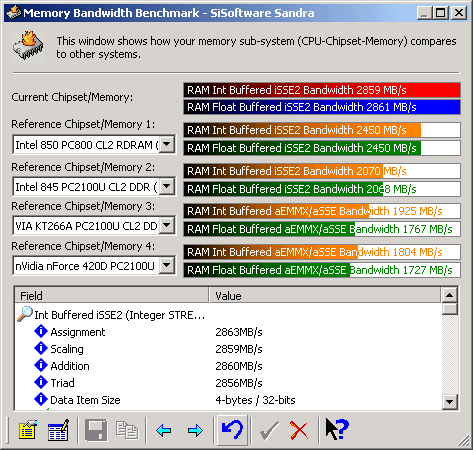
| Summary : |
![]()
[Intel] Asynchronous Benchmark results
Here we arrived at the most interesting part of our "DDR400 testing program", the asynchronous mode testings on Intel Pentium IV based platform. Compared to our previous testing this configuration is accessible bu anyone, and hereby this platform only requires widely available technologies. For these testings we have used an easy to source Intel Pentium IV "NorthWood" 1.6GHz, and an ASUS P4S333. Like we mentionned already, there are two ways to handle the DDR400 performance :
- 120MHz FSB with a CPU/RAM ratio at 3:5 (200MHz DDR400) for a CPU frequency at 1920MHz
- 160MHz FSB with a CPU/RAM ratio at 3:4 (200MHz DDR400) for a CPU frequency at 2560MHz
I suppose it's easy to understand that compared to the second, the first
operational mode will be much more convenient to handle. Anyway our NorthWood
1.6A offered us absolutly stable operation in both operational modes.
Wich conforms to our desire to make this part completely accessible to
anyone. Basicly we will develop our testings arround the 120MHz platform,
and we will compare the results with those obtained on the 160MHz.
Following modes will also be tested : 100/100 - 100/133 - 100/166 - 150/150
- 120/200 and 160/200) the memory timings in all modes remain unchanged
at CAS 2.5
We will start our basic testings with WStream :
-= WStream =-
Let's take a look at the results :
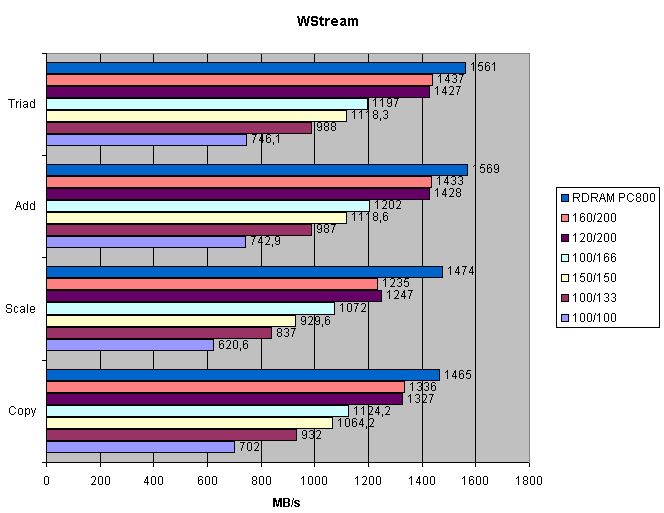
Like we can see here, the DDR400 offers similar performance for the 120/200
setting as for the 160/200 settings. The data throughput now comes really
close to what a Rambus offers. We also noticed that the Wstream results
are quite reliable, as the 150/150 setting offers an equal performance
as the 100/166 setting.
-= MBench =-
Let's take a look at the MBench results :
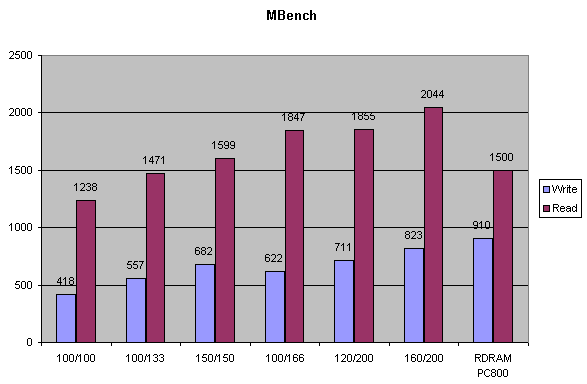
Here the results are absolutly clear, the 160/200 configuration offers unbeatable performance. Like what we experienced on the AMD platforms, the Rambus has minor advantage in Write mode but is completely outdated in Read mode. Important is that in this part we only considered the INT results, without refering to the MMx/SSE2 instruction sets. Here you have the memory latency chart :
|
FSB
|
Latency (ns)
|
| 100/800 RAMBUS |
171
|
| 100/100 DDR |
197
|
| 100/133 DDR |
169
|
| 100/166 DDR |
156
|
| 150/150 DDR |
132
|
| 120/200 DDR |
137
|
| 160/200 DDR |
122
|
Here also the Rambus latency is strugling more and more, while the DDR400 goes bellow de 125nS barrier, wich is an excellent performance compared to the 108nS we realised on the synchronous platform.
-= SiSoft Sandra 2002
=-
With Sandra we will realise our benchmarks in SSE2 buffered
mode :
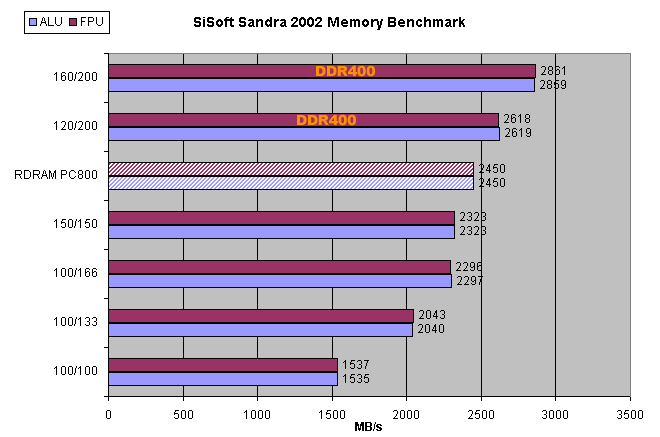
Like we presumed, while the Rambus was still dominating under Wstream, it's outdated in performance with the SiSoft Sandra benchmark. We find back the Rambus somewhere between the DDR333 and the high performance DDR400.
-= Quake3 =-
Just for the fun, here what we obtained with Quake 3 :
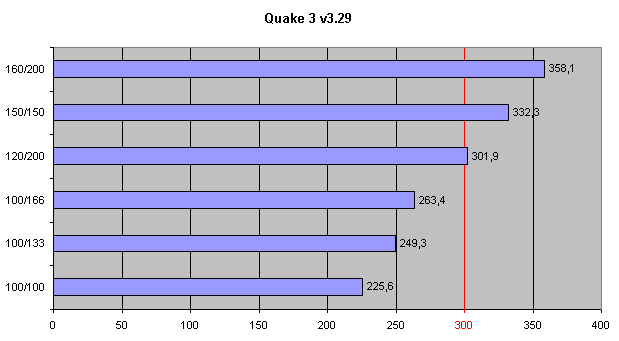
We have beaten the 300 FPS barrier ! More, we obtained a very respectable 358 FPS in 160/200 mode !! But, looking at the performance obtained with the 150/150 platform, we have to admit that a good CPU is extremly important in order to obtain a high-performance system. Anyway this fantastic performance wouldn't have been possible either, without having this Kingmax DDR .
Here we have clearly reached performances wich will probably only be
realised as common technology arround 2003. Considering the extraordinary
performance realised by this Kingmax DDR400, we are currenly convinced
that we found a real challenger for the current PC800 Rambus…
